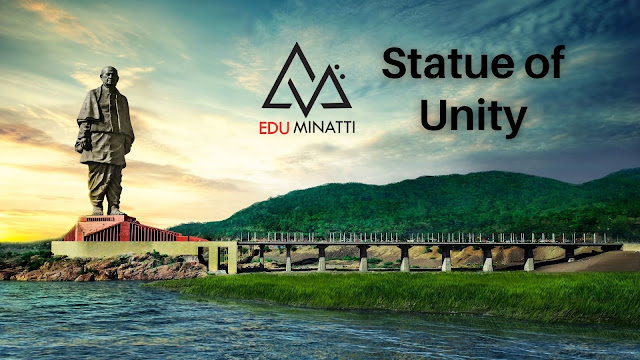Statue of Unity
The Statue of Unity, built in 2018 and inaugurated in December 2018 in the Narmada Valley of Gujarat, is the tallest statue in the world at 182 meters (about 597 feet). Previously it was the Spring Temple of Buddha in China that was the tallest statue in the world. But now, the Statue of Unity from India hails the top position in the tallest statue list.
The Statue of Unity was built to commemorate the Iron Man of India, Sardar Vallabhbhai Patel. Sardar Patel was an Indian politician and the 1st deputy prime minister of India. Sardar Patel worked with the father of the nation Mahatma Gandhi in his non-violent independence movements of India.
He was an important leader for the people of India in the Quit India Movement against Britishers, which eventually led the people to start calling him “Sardar.”
Post Independence of India, approximately 565 self-governing princely states were released from British rule under the Indian Independence Act, 1947. Then Sardar Patel led the national integration of all those princely states, thereby later getting entitled as the “Iron Man of India.” Students of international schools in Delhi go for educational trips to witness “Statue of Unity”.To remember his great endeavor of integrating the princely states of the nation, the statue was built with the name “Statue of Unity.”
Interesting facts about the Statue of Unity:
The Statue of Unity is the tallest in the world at 182 meters.
The project was announced by the then Chief Minister of Gujarat, Narendra Modi, in 2013.
Was inaugurated on October 31, 2018, the 143rd birth anniversary of Sardar Vallabhbhai Patel.
Construction engineering company Larsen & Toubro (L&T) bagged the contract by making the lowest bid of ₹2,989 crores (about $406 million in 2020).
The project was jointly funded by the Gujarat government and various public sector undertakings.
It took around four years to complete the project when it commenced on October 31, 2014.
Over 3000 laborers and 250 engineers were employed by L&T in the project.
One thousand eight hundred fifty tons of bronze makeup the detailed cladding of the statue.
Seventy thousand tons of cement, 18500 tons of steel bar, 6000 tons of structural steel, and 1700 tons of bronze make up the whole structure.
The base of the statue consists of 129 tonnes of scrap iron that are donated by the farmers of India from their old farming equipment under the Loha Campaign launched by the government.
The statue can withstand up to 60 m/s of wind velocity, earthquakes, and vibrations.
The statue was designed by the well-known sculptor Ram V Sutar who has been honored with the Padma Bhushan award in 2016.
The viewing gallery is located at the height of 153 meters inside the statue and can accommodate up to 200 people at a time.
There are two lifts on the legs of the statue that can carry 26 people each to the top in about a half-minute.
It is situated between the Satpura and the Vindhya mountain ranges and is surrounded by an artificially created lake.
How to reach?
Vadodara - is the closest to the statue at a distance of about 90km by road. Bus and train are not available, but taxis and self-driving routes are the most convenient. It takes around 2 hours of driving to get there from Vadodara.
Surat - from Surat, there are trains & buses available till Vadodara from where taxis can be rented. Or by road from Surat to the statue, it is a distance of around 164km and about 4 hours of drive.
Ahmedabad - trains and buses are available till Vadodara from Ahmedabad too. And by road, it is a distance of about 194km, which would take around 3.30 hours of drive.




Comments
Post a Comment